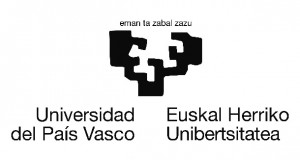The interest in free-radical processes in living systems has increased exponentially during the last decade. The huge complexity of the evolved processes makes necessary the analysis of the problem from a fundamental point of view. Radicals are ubiquitous intermediates in a variety of ordinary biochemical reactions. Some of the radicals that are most abundantly produced in natural biochemical reactions are Reactive Oxygen Species (ROS) such as hydroxyl, hydroperoxyl and superoxide anion, and Reactive Nitrogen Species (RNS), such as nitrogen monoxide and peroxynitrite.
However, due to the overproduction or poor control on these species, caused by a number of biochemical disfunctions, they can cause severe damage to a broad range of macromolecules, such as lipids, DNA and proteins, being the origin of many free-radical mediated pathologies. In particular, protein oxidation causes alterations in the intra- and inter- cellular communications, along with the loss of enzymatic function. Reactive species may interact not only with the polypeptide chains of complex proteins but also with the non-protein metallic part of the protein. The modification of the polypeptide chain may affect peptide bonds as well as side-chains of amino-acid residues, while the non-protein part may be affected as the radicals attack to the metallic part of the protein, both leading to a loss of enzymatic activity, with critical consequences for the cell. Although the knowledge on the above mentioned processes has increased in last years, there are many aspects that are unclear or poorly understood. For instance, several oxidation products and oxidation mechanisms have been proposed in the literature for the oxidation of side-chains of amino-acid residues and peptide bond cleavage, but in most cases these studies are not conclusive. Protein oxidation is known to be prevented by antioxidants, which are, in addition to enzymes, vitamins, metabolites and some synthetic antioxidants. However, the mechanisms involved in these reactions and the followed metabolic pathways are, in most cases, unclear. The aim of this research project is two-fold. On the one hand, we aim at providing insight into the oxidation mechanisms and the oxidation products that lead to the loss of enzymatic activity, and, on the other hand, we will study the antioxidant prevention by some natural and synthetic antioxidants.
In order to do it so, we will performed combined Quantum Mechanics (QM) and Quantum Mechanics / Molecular Mechanics (QM/MM) studies. It is widely accepted that the joint use of the methods and techniques of the Theoretical and Computational Chemistry is a well recognized tool to study the electronic structures of chemical species and the molecular mechanisms of chemical reactions. Pure QM methods will be used to study the prevention of oxidations of proteins by natural antioxidants such as vitamins C, B6, B9 and B12, and synthetic antioxidants such as Cu(II) macrocycles. The size of these antioxidants is sufficiently small as to be treated by QM methods. These methods also allow us to study accurately the small selected region of the protein where the reaction takes place. This is crucial to calculate accurately the most stable oxidation products of amino-acid side-chain residues, along with reliable reaction mechanisms of these oxidations and peptide bond cleavage reactions or prevention mechanisms of antioxidants. In this way, the oxidized products of all side-chains of amino-acid residues will be characterized along with their oxidation mechanisms. Moreover, we will be able to discriminate between various proposed mechanisms for peptide bond cleavage, by studying the peptide bond cleavage in different dipeptides. However, to take into account the protein environment, and keeping in mind that describing the full system by QM would be computationally overwhelming due to the large size of proteins, molecular mechanics (MM) force fields stand as the most reasonable alternative to include protein effects into the chemical reaction. Combination of both strategies generated the new hybrid methods, QM/MM, where a smaller part of the protein is treated by QM methods (at least those atoms involved in breaking and forming bonds), while the rest of the system (the protein and solvent molecules) is considered by MM. Hence, chemical intuition is required to decide which are the key atoms. Historically QM methods used in these QM/MM calculations were semiempirical methods but, unfortunately, these methods are not accurate enough for a proper description of radicals. Interestingly, recent developments of hybrid QM/MM methods incorporate high level ab initio methods such as DFT allowing the study of interactions of ROS and RNS with the whole protein. Thus, a particular enzyme, Glutamate Synthase (GS) enzyme from E. coli will be chosen as a model enzyme. This enzyme is an iron sulfide flavoprotein and is the one for which reliable experimental data is available. Unfortunately, there is no crystal structure of this enzyme. A model structure of this enzyme will then be constructed by homology modelling using the crystalized Glutamate Synthase of Synechocystis SP. This theoretical procedure will be later applied to human Glutamate Synthase to study its deactivation.
The knowledge obtained by this research has impact in two main areas. On the one hand, it builds up a new theoretical strategy for the study of radicals in biology from a computational point of view, that could be further applied in the study radical processes in biology. On the other hand, it provides fundamental insight into the oxidation processes of proteins and its prevention by antioxidants, that will be further use to design new strategies for the development of more efficient and safer antioxidants.
Publications:
- J. I. Mujika, J. Uranga, J. M. Matxain, “DFT study of OH radical attack onto aromatic amino acids“, Chemistry – A European Journal, in press (2013).
- J. I. Mujika, J. M. Matxain, “Theoretical study of the pH-dependent antioxidant properties of vitamin C“, Journal of Molecular Modeling, (2013). DOI: 10.1007/s00894-012-1465-5
- J. M. Matxain, D. Padro, M. Ristilä, A. Strid, L. A. Eriksson, “Evidence of High •OH Radical Quenching Efficiency by Vitamin B6“, The Journal of Physical Chemistry B, vol.113, iss.29, p.9629-9632, (2009) . DOI: 10.1021/jp903023c


